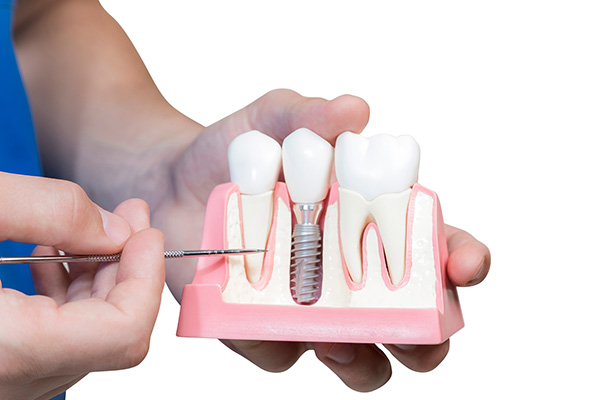 You may be a good candidate for an implant dentistry procedure if you are missing one or more teeth and desire the highest quality (and most natural) restoration possible. This review discusses what an implant dentist looks at when determining if a patient is a good candidate for the procedure.
You may be a good candidate for an implant dentistry procedure if you are missing one or more teeth and desire the highest quality (and most natural) restoration possible. This review discusses what an implant dentist looks at when determining if a patient is a good candidate for the procedure.
Who is a good candidate for implant dentistry?
Ideally, implant dentistry patients should have good periodontal health, a desire for a long-term solution, and a willingness to go through a more extensive (and more invasive) treatment process to achieve the best results possible for teeth replacement. The following is a closer look at who makes for an ideal candidate for implant dentistry.
One or more missing teeth
Implant dentists are able to replace one tooth, a section of teeth, or an entire row. For single tooth replacement, the implant dentist can use a single dental implant and a dental crown, which is known as an implant-supported crown. An implant-supported bridge may be necessary for replacing a section of teeth, or an implant-supported complete denture can be used for replacing an entire row.
Healthy jawbone and gums
Implant dentistry patients are also required to have good periodontal health. If there has been a loss of bone inside of the jaw due to periodontal disease or atrophy following the loss of teeth, then a bone graft procedure may be necessary to replace the lost bone before the implants are placed. Implant dentists typically recommend treating periodontal health to improve the health of the gums as well.
A desire for a durable and permanent solution
Individuals seeking teeth replacement may prefer implant dentistry if they want the longest-lasting results possible. Dental implant restorations last much longer than removable dentures and fixed bridges. In fact, it is not uncommon for dental implants to last for more than twenty years when they are properly cared for.
Willing and able to go through minor surgery
The placement of the dental implants requires minor surgery, involving an incision into the gums and drilling small holes into the jawbone to place the implants. While this procedure is safe with minimal risks, it does make the process more invasive and subsequently causes the process to be longer than with alternative options.
Caring for your dental implant restoration
A major benefit of implant dentistry is that patients can care for their restoration the same as they could with natural teeth. Specifically, patients are encouraged by implant dentists to brush, floss, and use mouthwash as directed, make smart dietary choices, and protect teeth from dental trauma or teeth grinding at night.
Are you interested in restoring the beauty, health, and function of your smile?
If you feel as if implant dentistry is right for you or have additional questions as to whether or not treatment is appropriate for your needs and goals, contact us today and schedule a time for a consultation. Our team can help you decide if implant dentistry is right for you.
Request an appointment or call Igor Tkachuk DDS at 718-416-6422 for an appointment in our Staten Island office.
Related Posts
Implant dentistry includes the entire treatment implant process, from the consultation visit to providing aftercare and educational services to ensure the implants remain in good condition. The following review discusses how you can get the most out of your dental implants through good aftercare practices.You can care for your dental implant restoration by implementing a…
Patients missing one or more teeth may benefit from implant dentistry, which offers long-term replacement options. Continue reading to learn about replacing a single lost tooth with an implant. Implants are used to hold single crowns, bridges, or a whole set of teeth in place. Their application as fixed restorations, whether for single or multiple…
If you have opted for implant dentistry to replace your missing teeth, you will need to decide on fixed or removable restorations. Read on to learn about implant dentistry and your options. Removable implant-supported restorations can be snapped on and off the abutments anytime there is a need to take off. In contrast, fixed restorations…
